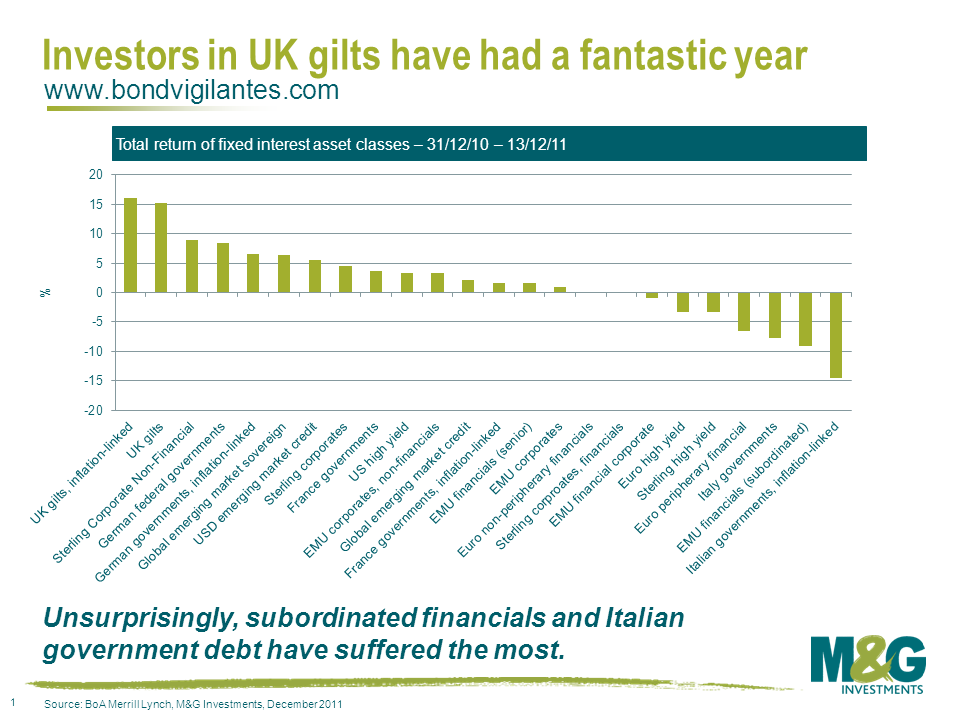A review of fixed interest asset class returns in 2011
The decorations are up, the presents are under the tree, and I’m starting to think of New Year resolutions. Yes 2012 is almost upon us. With that in mind, I thought it might be interesting to have a quick look at who have been the winners and losers in debt markets over the course of an eventful 2011.
As the below chart shows, investors in UK gilts have had a fantastic year. The top performing area of the bond market has been inflation-linked gilts which have provided a fantastic return of 16% to investors, despite the Bank of England’s quantitative easing programme not targeting this area of the market. Investors have sought the protection of inflation-linked assets in a horrible year for the Bank of England where inflation has hovered around the 5% mark due to higher commodity prices and tax increases. UK and German government bonds have generated great returns for investors due to the increase in risk aversion that has characterised markets since the summer.
At the other end of the scale, investors in Italian inflation-linked government bonds have suffered a loss of almost 15% due to solvency concerns surrounding the Italian government and the fear that Italy is entering into a prolonged recession as fiscal austerity measures begin to kick in.
Investment grade corporate bonds have had a solid year but it is important to define returns for non-financial and financial corporates. Non-financial credit has been the place to be, with Sterling non-financials up around 9% end EMU non-financials up 2% (a good result considering concerns around the growth outlook for Europe). Financials have lost ground this year, particularly European financials. Investors in peripheral and subordinated financial debt have had a terrible year. If you did own financial assets, senior debt outperformed subordinated debt by around 10%.
As expected, high yield markets have suffered as expectations that default rates would increase due to the global economic slowdown with European and Sterling high yield both losing 3.4%. That said, high yield markets have performed relatively well when one considers that the European and UK equity markets are down around 20% and 8% respectively this year. US high yield has generated a positive return for investors this year of 3% due to less chance of a recession in the US and relatively low leverage levels for US high yield businesses. The general view is that the US is a lot more advanced than both Europe and the UK in dealing with its anaemic growth outlook through aggressive and unconventional central bank monetary policy actions.
In the emerging market space, EM credit denominated in US dollars has done well and so has EM sovereign credit. Emerging markets have benefitted from substantial capital inflows over the last few years and certainly this is a trend that we are keeping a close eye on. A reversal of the huge capital inflows into EM debt would result in a total lack of liquidity and significantly higher borrowing costs for emerging market countries.
We are interested in hearing which fixed interest asset class our readers think will be the top performer in 2012, so please feel free to nominate your choice in the comments box below.
The value of investments will fluctuate, which will cause prices to fall as well as rise and you may not get back the original amount you invested. Past performance is not a guide to future performance.


18 years of comment
Discover historical blogs from our extensive archive with our Blast from the past feature. View the most popular blogs posted this month - 5, 10 or 15 years ago!


Bond Vigilantes
Get Bond Vigilantes updates straight to your inbox






